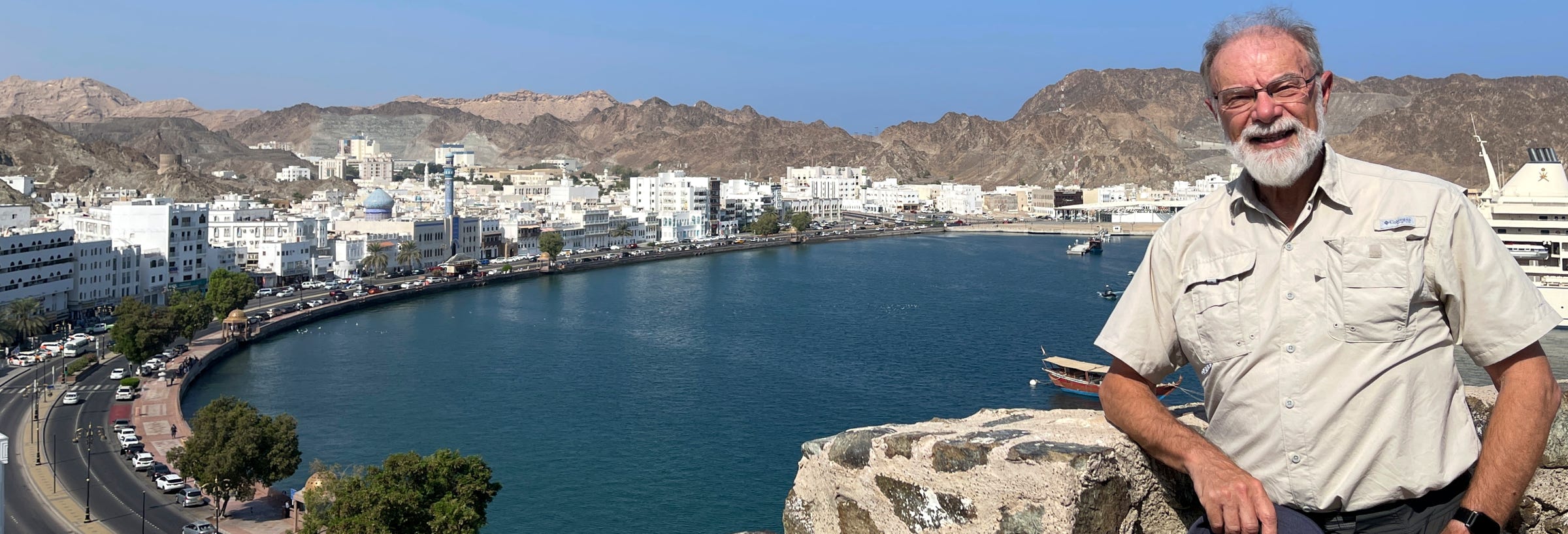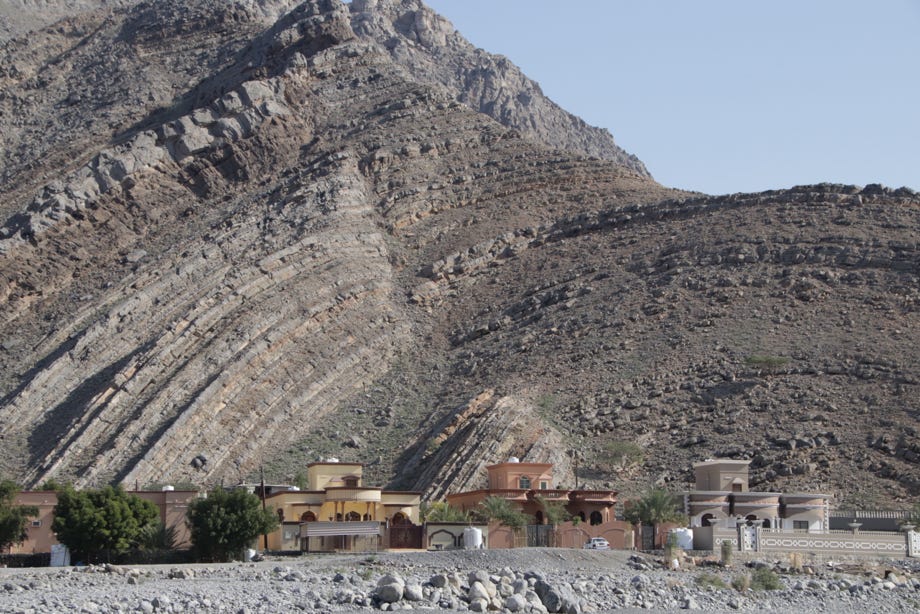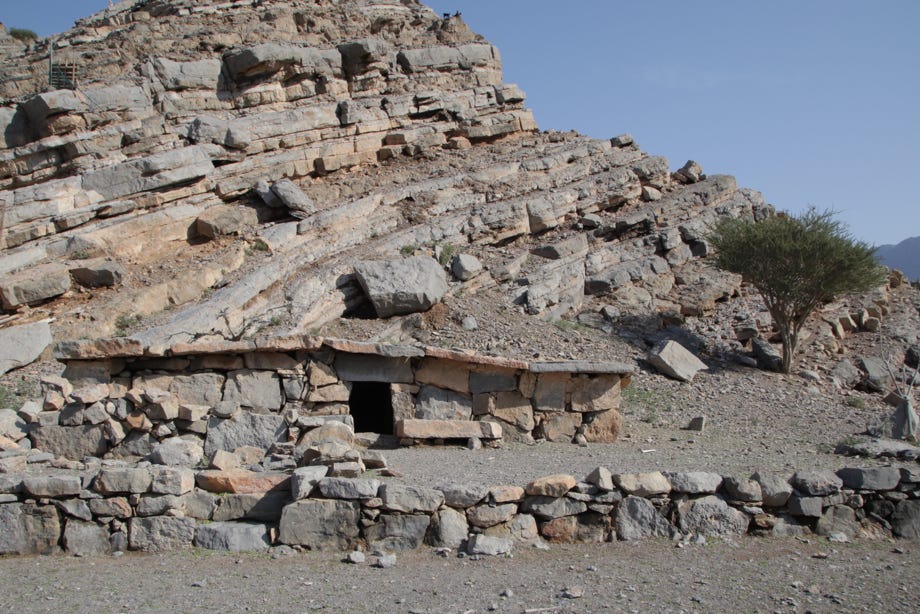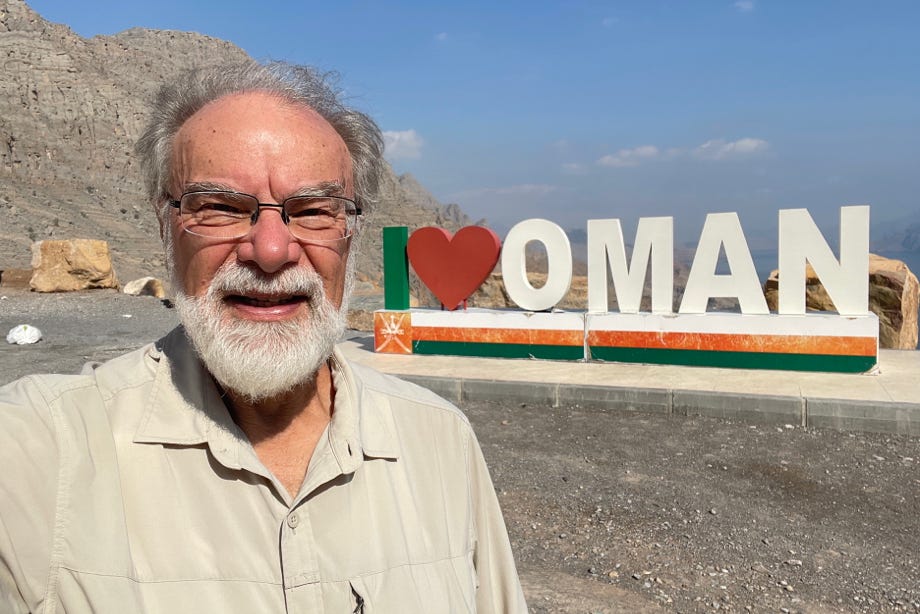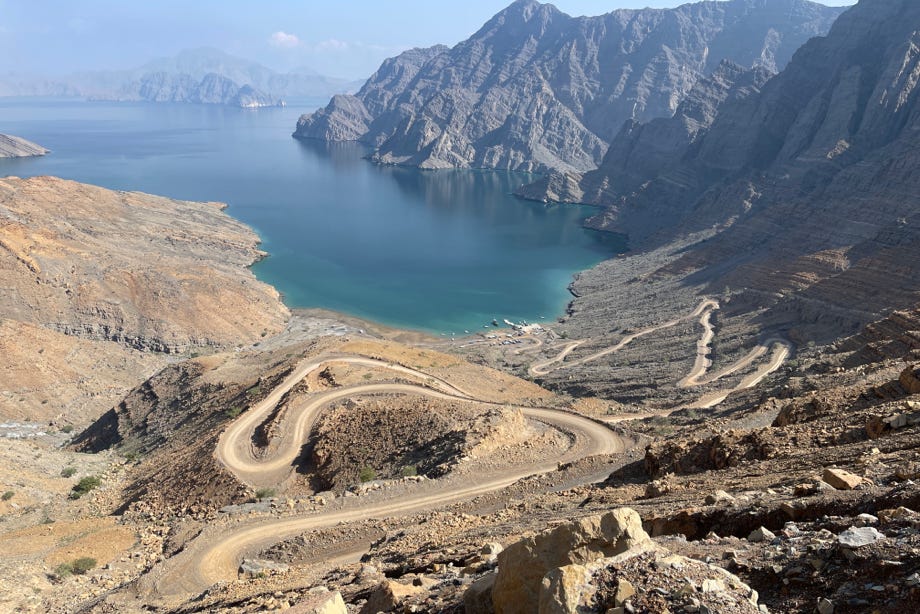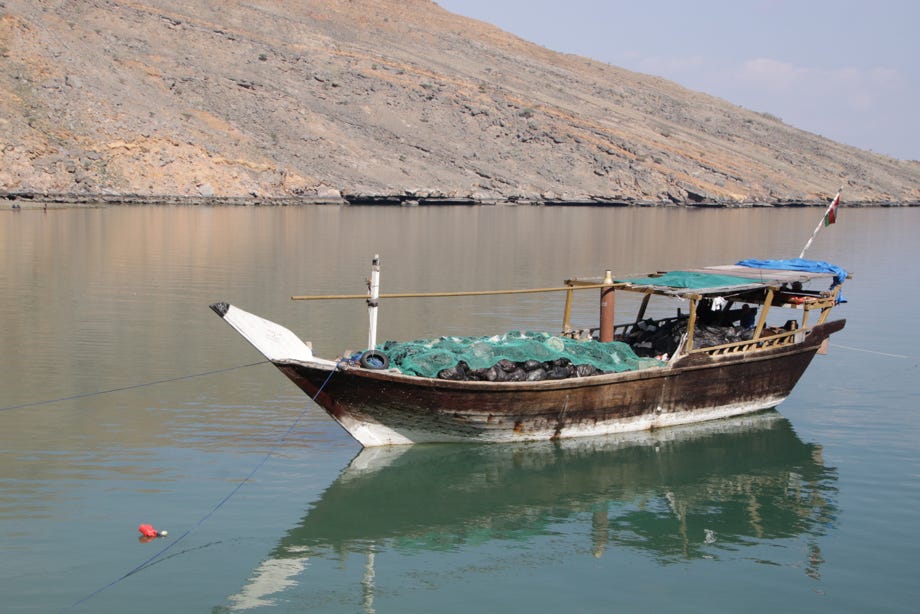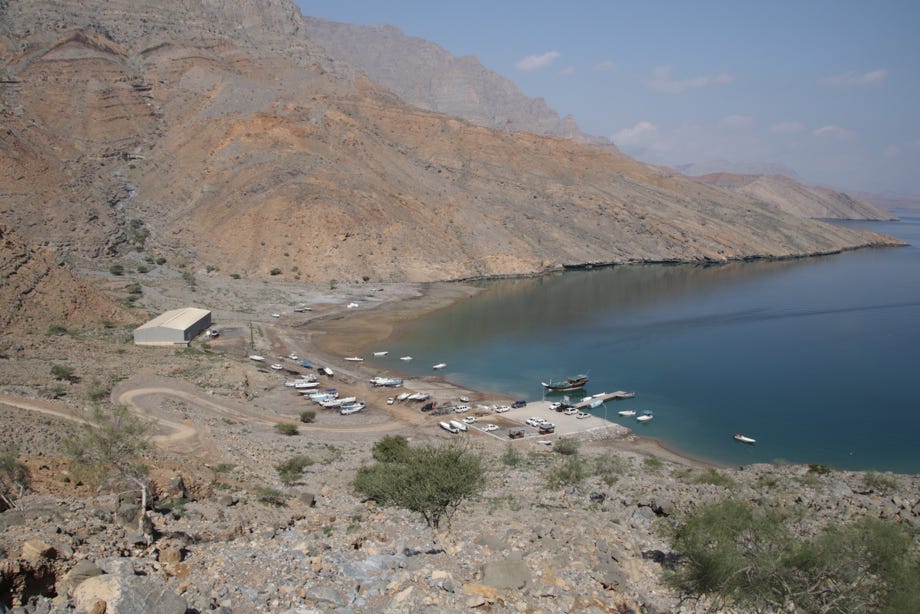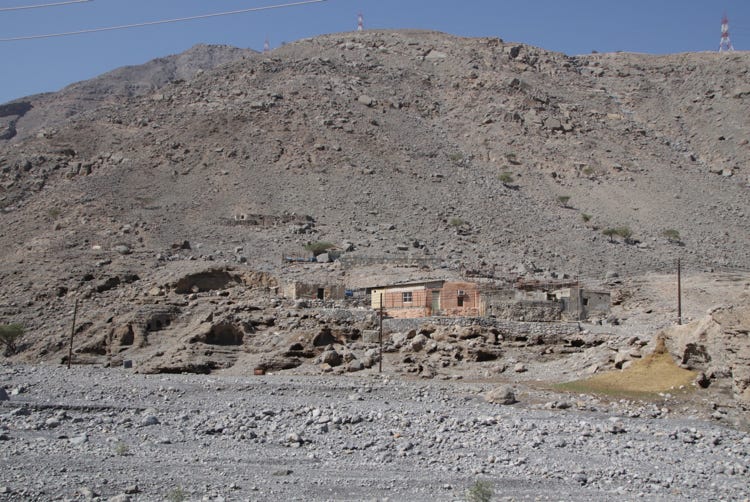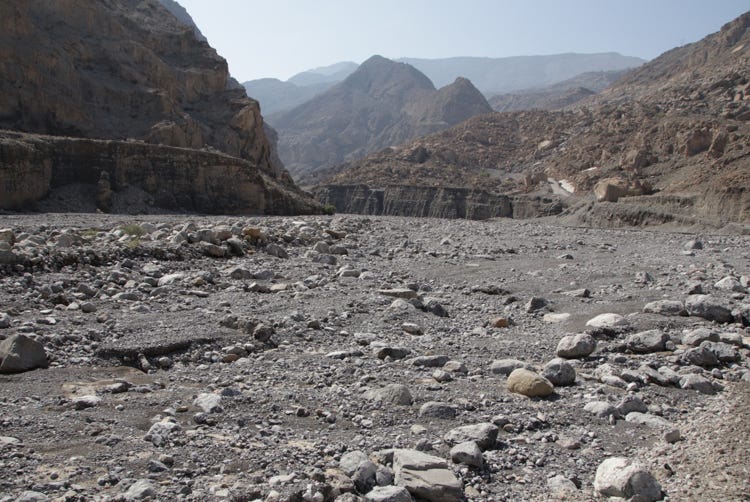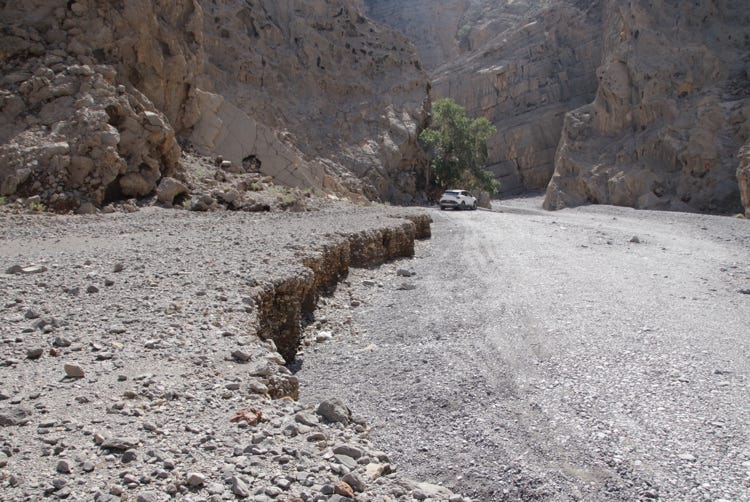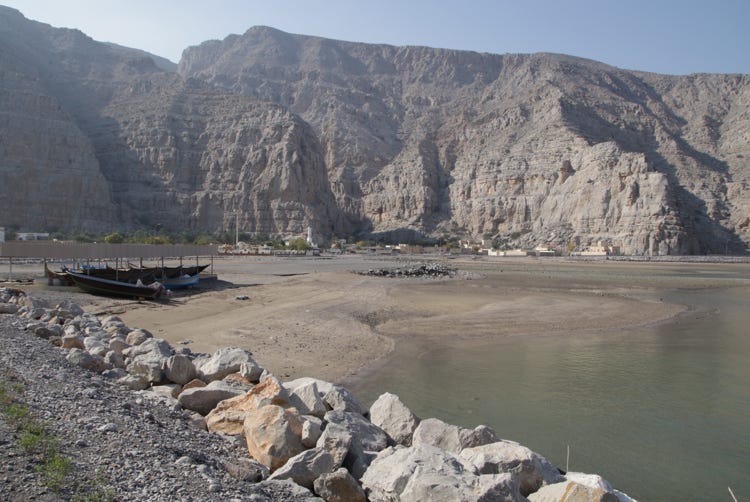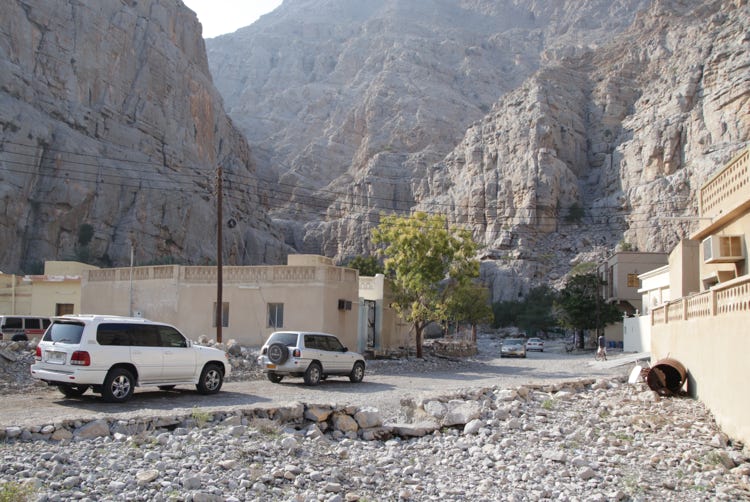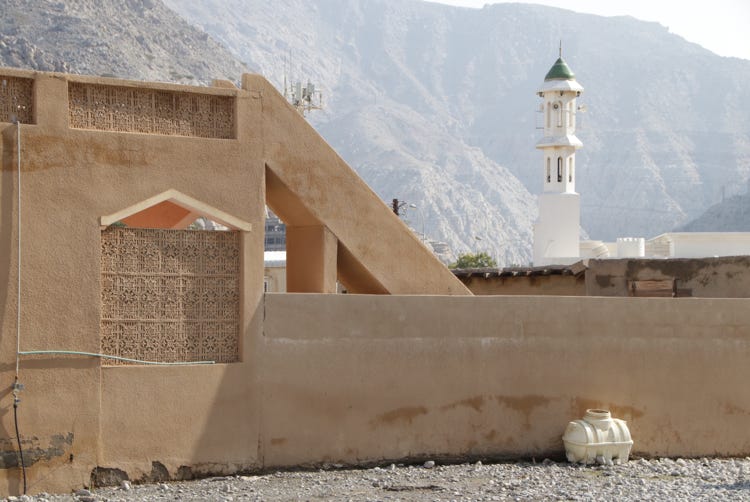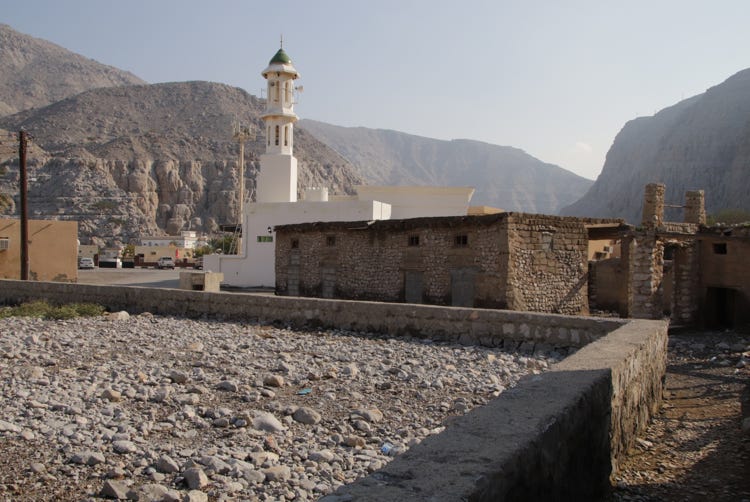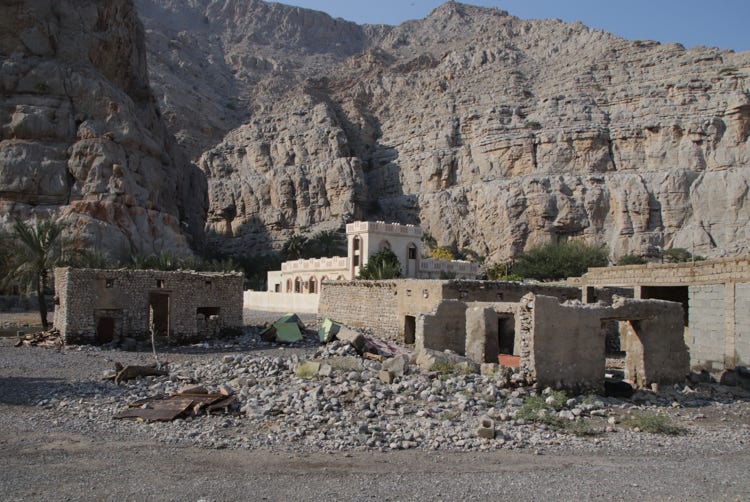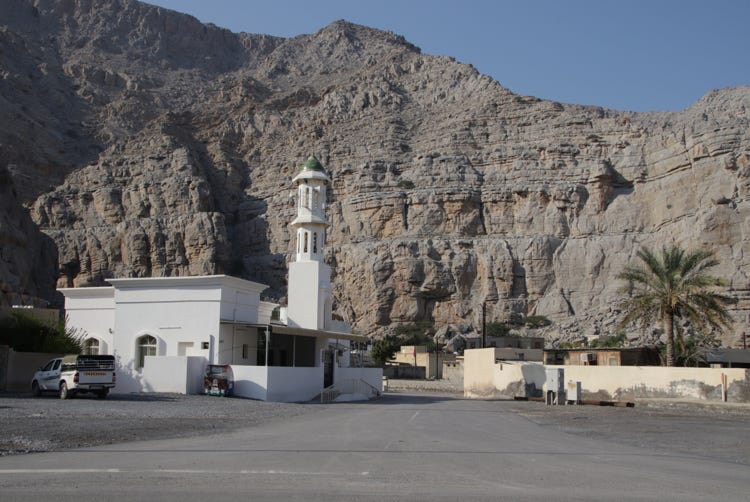The Musandam peninsula region of Oman is not very large; its area is less than 1,800 square kilometres and its population is a little less than 50,000 people. Much of the peninsula is mountainous. As most of the inland roads are suitable only for 4WD vehicles (which I don’t have), my capacity to visit many areas was restricted. My intention today was to see a short list of interesting places that were accessible with the small SUV I was renting.
After a fairly leisurely start to the day, my first stop was a Baith Al Khufl (aka Bait al-Qufl), 23 kilometres south-east from my hotel. A Baith Al Khufl is a traditional storage structure unique to the Musandum Peninsula. They were (and sometimes still are) used for storing valuable items when the owners were away with their animals seeking better pasture, and also to store seed for subsequent sowing. Constructed of stone and acacia wood, they are built into the hillside, with access to a sunken floor through a tiny, difficult to access doorway. The Baith Al Khufl I visited seemed to be disused even though it was situated on a functioning farm that had a healthy flock of goats.
My second stop was just 3 kilometres further along the road. My destination was the Khor Najd mobile phone tower, not because the tower was particularly beautiful (it wasn’t) but because it was situated on the crest of a hill that afforded a spectacular view to the north-east across Khor Najd. It was clearly expected that visitors should stop there as a large “I heart Oman” sign had been erected beside the road.
Unlike Khor ash Sham which I visited yesterday, Khor Najd opens to the sea in the opposite direction. Khor ash Sham opens towards the west into the Persian Gulf (aka the Arabian Gulf) whereas Khor Najd opens towards the east to the Gulf of Oman and the Arabian Sea. Interestingly, the two khors are separated by a thin ridge that is only 200 metres wide.
The winding road continued for 3 kilometres down to a small beach at the head of Khor Najd. Although the online reviews I had read suggested the drive from the mobile phone tower to the beach was only possible with a 4WD, I saw that this was clearly not so when I looked at the cars parked beside the beach. Therefore, I abandoned my initial plan to walk down to the beach and back again, and I drove down (and back). The drive was slow but quite safe for anyone with experience of driving on an unsealed road. Having made the drive, I concluded that the best view had been the one from the top of the hill beside the mobile phone tower.
Encouraged that I had been able to negotiate a supposedly 4WD-only road to Khor Najd, I decided to try and drive south along the Jabal Sayh Road that heads into the mountains to see how far I could make it. After all, it was possible that the road had been upgraded, or maybe even sealed. The warning sign at the start of the road was far from encouraging though, making it clear that this was indeed a road for 4WD vehicles.
However, the initial three kilometres or so followed the flat gravel plain of a wadi outwash, so this section was fine. I was able to get as far as Echo Point, the point at which vertical cliffs created an echoing amphitheatre. It was an interesting place to explore, with some very nice box-canyon erosion on the river banks.
It was clear that I had reached the limits of accessible roads around Khasab, so I returned to Khasab, filled the fuel tank in preparation for the long drive back to Muscat, and thought about where I could go on the roads that were available. There was really only one more destination I wanted to visit, Bukha Fort, but as it was due to close at 2:00pm, I didn’t have enough time to get there. (I did, however, make a mental note to call in as I drove past on tomorrow’s long drive).
Therefore I returned to the hotel and decided to take a walk in the opposite direction to the other walks I had been doing. Rather than walking towards Khasab, I thought it would be a good idea instead to walk south to Qida Beach. Although there was no formal footpath, the road had a wide verge marked by a yellow line, so I never felt in danger on the 7 kilometre return journey. Walking is a great way to soak up the tiny details of a landscape, and the combination of a refreshing sea breeze and 20 degree Celsius temperatures made for a very pleasant experience.
Qida Beach is a very small settlement, and one of the least affluent I have seen in Oman. Judging by the small boats lined beside the beach (with a couple of shipwrecks), the main industry in in Qida is fishing. There is a small mosque and some fairly basic houses arranged semi-randomly around unsealed roads and pathways, all set against a spectacular backdrop of vertical cliffs.
Qida Beach is the kind of place that no passers-by would give a second glance, but I loved walking through the settlement and soaking up the atmosphere. It was a very pleasant finish to a relaxing day of easy sightseeing.
